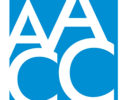Report roundup
By AACC 21st Century Center Staff
October 29, 2020
A monthly roundup of reports of interest to the community college sector.
Here are three reports to check out this month.
- More community college students this fall have transferred to four-year institutions than last year, according to preliminary survey findings from the National Students Clearinghouse (NSC) Research Center. Traditional upward transfers among community college students have increased 2.6% compared to last fall. However, this was uneven across different student subgroups, with male students, Black students and adult learners falling further behind other demographics, the center noted. The survey also found that other types of transfers, such as community college-to-community college or university-to-community college, have declined. The number of reverse transfers (university students transferring to two-year colleges) fell 18.4%, as did lateral transfers (-8.3%). There also was a 10.8% drop among “summer swirlers” – four-year college students who take community college courses in the summer.
- A new report from the Center for Community College Student Engagement (CCCSE) urges colleges to better meet working students’ needs by providing support services, helping them with scheduling and promoting ways for working students to develop stronger connections with faculty and staff. Among students surveyed for the 2019 CCCSE survey of student engagement, 69% had a job. The survey also found that 29% of students work for pay more than 40 hours a week, and 15% of students who work for pay have at least two jobs. In addition, 62% of part-time students (and just 28% of full-time students) say that working determines how they enroll. This information was captured in a new “special-focus” module added to the CCCSE survey, which explored the experiences of students between the time they decided to enroll in college through the third week of the fall term.
- The College Board’s annual report on pricing finds that the average 2020-21 tuition-and-fees sticker price for public two-year colleges is $3,770, which is an increase of 1.9% (or $70) for full-time students compared to last fall. Though many students are eligible for grants to cover tuition and fees, those costs are only part of the total price of attending college. The College Board reported that the average estimated budget (tuition and fees, books and supplies, transportation and other expenses) is $18,550 for full-time, public two-year college students. After grants are applied, the average net cost for estimated food and housing is $8,860 and $5,700 for books, supplies, transportation and other expenses.



